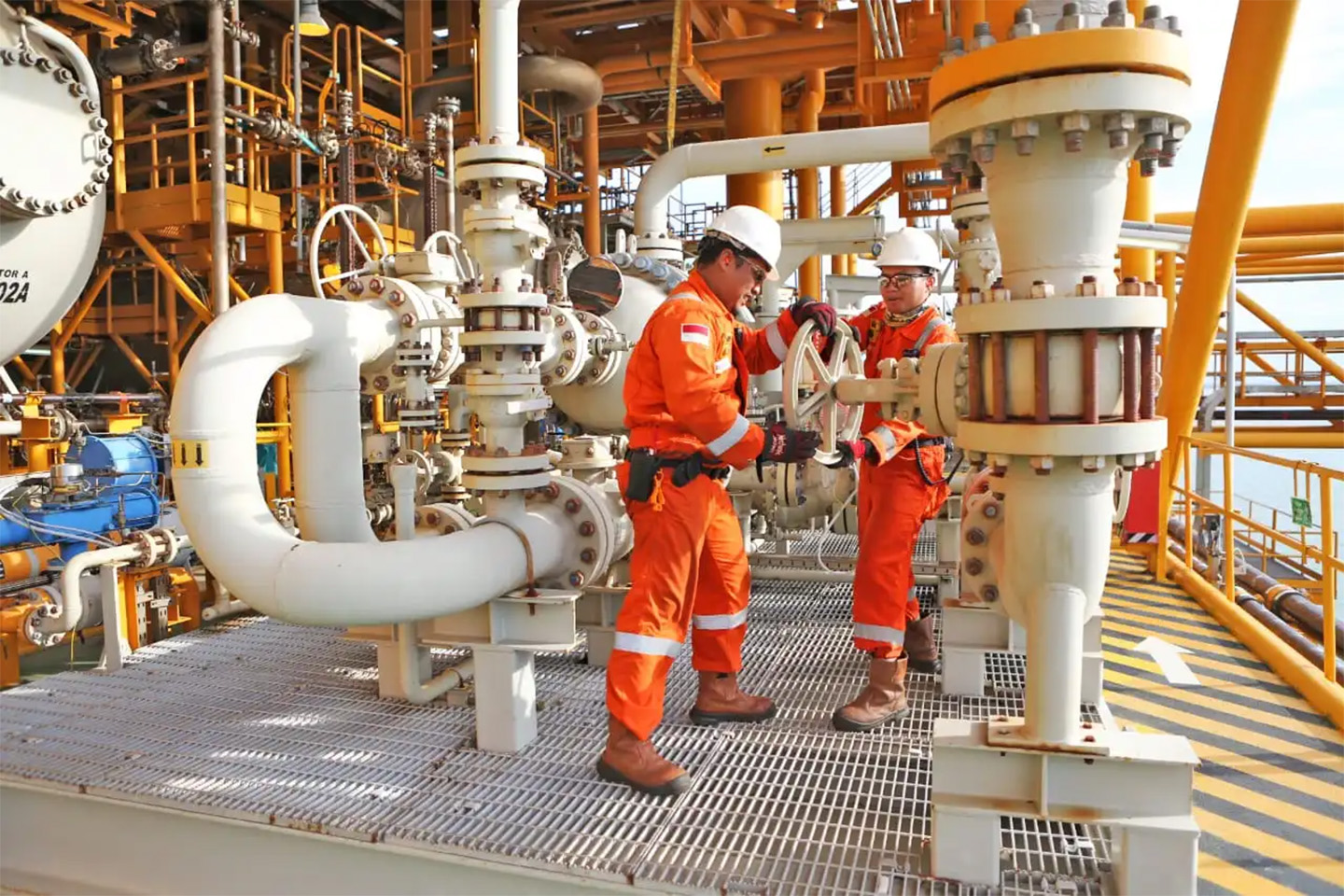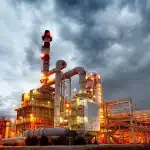Liga Asuransi – Dear readers, how are you? I hope your business keeps doing well.
Risk management and insurance are part of all kinds of business; risks are always behind an opportunity. Therefore, as a businessman, you need to know the risks and manage them to achieve the company’s mission.
This time we will be discussing the risk management and insurance needs for Upstream Oil and Gas.
As a senior insurance broker focusing on the oil and gas industry, I will look at the nature of the upstream oil and gas business, the activities, the risks, and the insurance solutions.
If you are interested in this article, please share this with your friends so they can understand as you do.
For your information, the future of the oil and gas industry is a topic of much debate and speculation, as various factors could shape its trajectory.
While the industry is expected to face challenges in the years ahead, it is also possible to continue to play an essential role in meeting global energy demand for some time.
The Future of the Oil and Gas Industry
Below are factors that shape the future of the oil and gas industry:
Climate change and decarbonization
As the world increasingly seeks to reduce carbon emissions and transition to renewable energy sources, the demand for oil and gas will likely decline.
Energy demand
While the demand for oil and gas may decline over time, it is still likely to remain an important energy source for many years, particularly in developing countries.
Geopolitical factors
The oil and gas industry is heavily influenced by geopolitical factors such as trade policies, sanctions, and conflicts, which can create volatility and uncertainty in the market.
Technological innovation
The oil and gas industry constantly evolves, with technological advancements leading to more efficient and cost-effective exploration, production, and refining processes.
What is the future of the oil and gas industry in Indonesia?
Indonesia is one of the world’s oil and gas producers and exporters, accounting for a significant portion of the country’s economy.
Overall, the future of the oil and gas industry in Indonesia is likely to be shaped by a combination of these and other factors, as well as broader global trends in the industry. While there may be challenges ahead, the industry is expected to remain an essential part of the country’s economy and energy mix for some time.
Here are some key factors that are likely to shape the future of the oil and gas industry in Indonesia:
Domestic demand
While Indonesia is an exporter of oil and gas, there is also strong demand for these resources. This demand will likely continue to grow as the country’s population and economy expand, and the government seeks to increase access to energy in rural areas.
Exploration and production
Indonesia has significant oil and gas reserves, but many are in challenging offshore environments or aging fields that require substantial investment to maintain production.
Therefore, there is a need for ongoing exploration and development of new areas to maintain production levels and support the economy.
Investment and infrastructure
The Indonesian government has been encouraging investment in the oil and gas industry, offering more favorable terms for foreign investors and increasing investment in infrastructure such as pipelines and storage facilities. These efforts will likely support the sector in the years ahead.
Renewable energy
Like other countries, Indonesia is looking to expand its renewable energy capacity as part of efforts to reduce carbon emissions and address climate change. While this may create challenges for the oil and gas industry in the long term, it is also an opportunity for the industry to invest in new technologies and diversify its operations.
Understanding the Upstream Oil and Gas Activities
In the oil and gas industry, the term “downstream” generally refers to the refining, processing, transportation, and distribution of petroleum products after they have been extracted from the ground by upstream companies.
Examples of downstream companies in the oil and gas industry include integrated oil companies such as BP, ExxonMobil, and Royal Dutch Shell, as well as independent refining and marketing companies such as Valero Energy, Marathon Petroleum, and Phillips 66.
What are the activities of upstream oil and gas?
In the oil and gas industry, the term “upstream” generally refers to the exploration and production (E&P) activities involved in finding and extracting oil and natural gas resources from the earth. Upstream companies in the oil and gas industry are primarily engaged in activities such as:
Exploration
This activity involves searching for oil and gas reserves using geophysical surveys and drilling test wells.
Drilling
Once a potential reserve is identified, drilling is carried out to access the oil or gas deposits. This activity can involve drilling vertical or horizontal wells, depending on the location and characteristics of the reservoir.
Production
After drilling, the oil or gas is extracted from the reservoir, usually using pumps or other mechanisms to bring it to the surface.
Field Development
This activity involves planning and implementing the necessary infrastructure to develop an oil or gas field, such as installing pipelines, production facilities, and storage tanks.
What are the risks and potential accidents of the upstream oil and gas industry?
The upstream oil and gas industry involves several risks and potential accidents, which can significantly impact the environment, human health, and the economy. Here are some of the key risks and potential accidents associated with upstream oil and gas activities:
Oil spills
Oil spills can occur during drilling, transportation, or storage of crude oil and other products. Spills can devastate marine and coastal ecosystems, wildlife, and the livelihoods of local communities. They can also be costly to clean up and damage the reputation of the companies involved.
Blowouts
A blowout is a sudden and uncontrolled release of oil or gas from a well. Blowouts can cause explosions, fires, and other serious accidents and can also result in significant environmental and economic damage.
Health and safety hazards
Upstream oil and gas activities can expose workers to various health and safety hazards, including toxic chemicals, fires, explosions, and falls. These hazards can lead to injuries, fatalities, and long-term health problems.
Air and water pollution
The extraction and processing of oil and gas can result in air and water pollution, which can negatively impact human health and the environment. Pollutants such as methane, volatile organic compounds, and particulate matter can contribute to air pollution. At the same time, wastewater from drilling can contaminate water sources.
Land use and habitat destruction
Upstream oil and gas activities can require significant land use, resulting in habitat destruction and fragmentation, particularly in areas rich in biodiversity. This activity can significantly impact wildlife populations and ecosystems’ overall health.
Overall, these risks and potential accidents underscore the importance of strong regulations, monitoring, and enforcement in the upstream oil and gas industry to prevent and mitigate these impacts.
World’s Oil and Upstream Gas Accidents
In the past, there have been several high-profile accidents and incidents in the upstream oil and gas industry. Here are a few examples:
Deepwater Horizon oil spill
In 2010, the Deepwater Horizon oil rig, which was drilling in the Gulf of Mexico, suffered a blowout, resulting in a massive oil spill. The spill released millions of barrels of oil into the ocean and caused significant environmental and economic damage. The incident also resulted in the loss of 11 lives.
Piper Alpha disaster
In 1988, an explosion and fire occurred on the Piper Alpha oil rig in the North Sea, resulting in the loss of 167 lives. The incident is considered one of history’s deadliest offshore oil and gas disasters.
San Juanico disaster
In 1984, a gas explosion occurred at a Pemex liquid petroleum gas (LPG) plant in San Juanico, Mexico. The explosion resulted in a massive fire that killed over 200 people and injured thousands.
Exxon Valdez oil spill
In 1989, the Exxon Valdez oil tanker struck a reef off the coast of Alaska, resulting in a massive oil spill. The spill released millions of gallons of oil into the ocean, causing significant environmental damage and impacting local wildlife and the fishing industry.
Buncefield oil depot explosion
In 2005, a massive explosion occurred at the Buncefield oil storage depot in the UK. The explosion resulted in significant property damage and injuries, but fortunately, there were no fatalities.
List of accidents that happened in oil and gas upstream in Indonesia.
Not only happened in other parts of the world, but there have also been several accidents in Indonesia’s oil and upstream gas industry. Some notable accidents include:
Lapindo mudflow disaster
In 2006, a gas well operated by Lapindo Brantas in East Java experienced a blowout, which led to the release of hot mud that submerged entire villages and displaced thousands of people.
Abadi gas field explosion
In 2018, an explosion occurred at the Abadi gas field in the Arafura Sea, which killed five workers and injured several others.
Paser gas well blowout
In 2017, a gas well operated by PT Chevron Pacific Indonesia in East Kalimantan experienced a blowout, which caused an explosion that injured several workers.
Tangguh LNG Plant Explosion (2007)
A gas explosion occurred at the Tangguh LNG plant in Papua, Indonesia, resulting in the deaths of 6 workers and injuring 33 others.
ConocoPhillips Gas Leak (2012)
A gas leak occurred in the Sidoarjo block of East Java, Indonesia, causing the death of one worker and injuring several others.
Chevron Oil Spill (2018)
An oil spill occurred in the Rokan block in the Riau province of Sumatra, Indonesia. The fall affected local fishing communities and caused significant environmental damage.
These incidents highlight the risks associated with the upstream oil and gas sector and the importance of maintaining safety and environmental standards to prevent accidents.
What are the Types of Insurance needed for Oil and Gas Upstream Business?
Upstream oil and gas activities involve various risks and hazards and, as a result, require various specialized insurance products to help manage and mitigate these risks. Here are some of the critical types of insurance that may be needed for upstream oil and gas activities:
Property insurance
This insurance covers damage to physical assets, such as oil rigs, pipelines, and other infrastructure. It can also protect against the loss of income from property damage, such as the loss of production from a damaged well.
Well Control Insurance
Control of well insurance, also called well control insurance, covers some or all the costs associated with a well blowout, including regaining control, cleaning up pollution, and redrilling or restoring the well to operation. A blowout is when crude oil and natural gas are accidentally and uncontrollably released from a well due to a failure of pressure control systems.
Liability insurance
Upstream oil and gas activities can expose companies to liability risks, including third-party bodily injury, property damage, and environmental damage. Liability insurance can help to protect companies against these risks.
Directors’ and officers’ insurance (D&0)
This type of insurance provides coverage for lawsuits brought against a company’s directors and officers, including claims related to breach of fiduciary duty, securities violations, and other legal issues.
Environmental liability insurance
This insurance covers environmental damage caused by upstream oil and gas activities, including oil spills and other pollution incidents.
Workers’ compensation insurance
This type of insurance provides coverage for on-the-job injuries and illnesses from workers in the oil and gas industry.
Overall, these and other insurance products can help to protect companies in the upstream oil and gas industry from a range of risks and hazards and ensure that they can operate safely and sustainably over the long term.
How to arrange insurance for upstream oil and gas business?
Arranging insurance for an upstream oil and gas business can be a complex process, and it’s essential to work with experienced insurance brokers and advisors who understand the unique risks and challenges associated with the industry.
Here are some steps to consider when arranging insurance for an upstream oil and gas business:
Conduct a risk assessment.
The first step in arranging insurance for an upstream oil and gas business is identifying the risks associated with your operations. This can include risks related to the exploration, drilling, production, transportation, and storage of oil and gas. A risk assessment can help you determine what types of insurance coverage you need.
Determine insurance requirements.
Once you have identified the risks associated with your operations, you will need to determine what types of insurance coverage are required by law, by your lenders, and by your business partners. This may include liability insurance, property insurance, workers’ compensation insurance, and environmental liability insurance.
Identify insurance providers.
Many insurance providers specialize in providing coverage for the upstream oil and gas industry. Work with an experienced insurance broker or advisor to identify potential providers and evaluate their offerings.
Evaluate coverage options.
Once you have identified potential insurance providers, evaluate their coverage options to determine which policies best meet your needs. Consider factors such as the scope of coverage, exclusions, deductibles, and premiums.
Purchase insurance.
After selecting the insurance policies that meet your needs, work with your insurance broker or advisor to purchase the policies and ensure that you have adequate coverage.
Review and update coverage regularly.
It’s important to review your insurance coverage regularly to ensure that it continues to meet your changing needs. As your operations evolve and new risks emerge, you may need to adjust your coverage accordingly.
In summary, arranging insurance for an upstream oil and gas business requires a comprehensive risk assessment, identification of insurance requirements, identification of insurance providers, evaluation of coverage options, and regular review and updating of coverage.
Working with experienced insurance brokers and advisors can help ensure that you have the appropriate coverage to protect your business.
In Indonesia, one of the insurance broker focusing on oil and gas risks is L&G Insurance Broker.
Call L&G for your insurance needs.
—
LOOKING FOR INSURANCE PRODUCTS? DON’T WASTE YOUR TIME AND CALL US RIGHT NOW
24 HOURS L&G HOTLINE: 0811-8507-773 (CALL – WHATSAPP – SMS)
website: lngrisk.co.id
E-mail: customer.support@lngrisk.co.id
—













